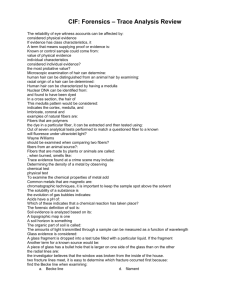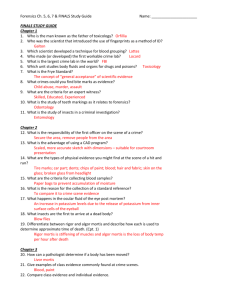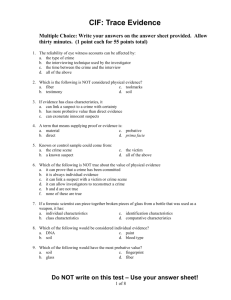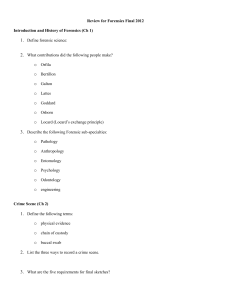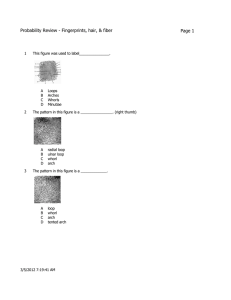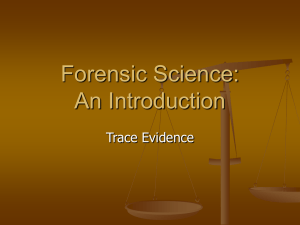Forensics: Study Guide for Unit Test 1
advertisement
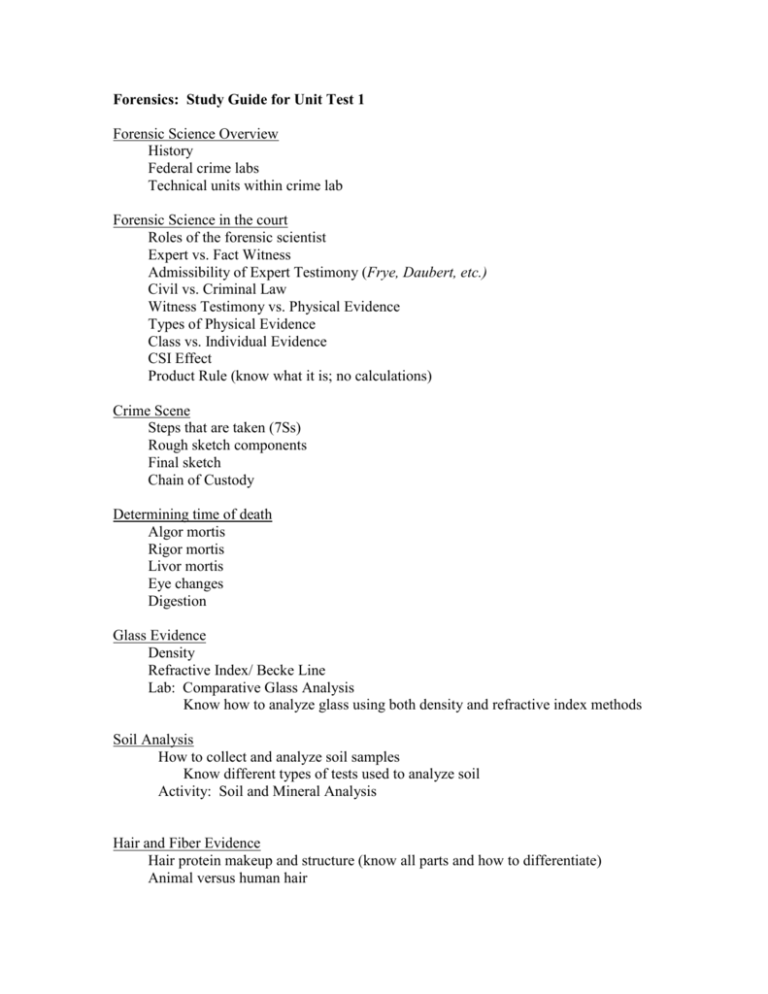
Forensics: Study Guide for Unit Test 1 Forensic Science Overview History Federal crime labs Technical units within crime lab Forensic Science in the court Roles of the forensic scientist Expert vs. Fact Witness Admissibility of Expert Testimony (Frye, Daubert, etc.) Civil vs. Criminal Law Witness Testimony vs. Physical Evidence Types of Physical Evidence Class vs. Individual Evidence CSI Effect Product Rule (know what it is; no calculations) Crime Scene Steps that are taken (7Ss) Rough sketch components Final sketch Chain of Custody Determining time of death Algor mortis Rigor mortis Livor mortis Eye changes Digestion Glass Evidence Density Refractive Index/ Becke Line Lab: Comparative Glass Analysis Know how to analyze glass using both density and refractive index methods Soil Analysis How to collect and analyze soil samples Know different types of tests used to analyze soil Activity: Soil and Mineral Analysis Hair and Fiber Evidence Hair protein makeup and structure (know all parts and how to differentiate) Animal versus human hair Cuticle: Know the three types and one representative animal per type Medulla: Which animal/human hairs have them and what kind Know how to calculate medullary index Hair growth: How quickly does hair grow Use of hair in toxicology studies Use in DNA testing (follicular tag for nuclear DNA; rest of hair for mitochondrial) Fiber structures (synthetic versus natural) Fiber tests: Know how to determine similarities and difference Lab: His Hair, Her Hair, Whose Hair Lab: Fiber Analysis Activity: Animal Hairs Activity: Examining Fibers


